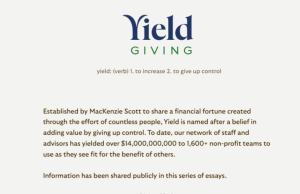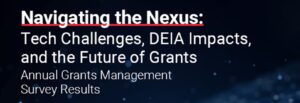The nonprofit sector will face, as always, legislative challenges on many fronts as we move into 2022. Some threats are active and with us now, while others are lurking. It’s probably a misnomer to call what follows “highlights.” Here are the items and subjects drawing the most attention from us at The Nonprofit Alliance (TNPA).
Postage Rates
Postal rates did what they always do during 2021. But, something was very different this time. We saw an increase reaching almost 10% across all classes of mail. Rates increased 1.5% in January and then in August rates jumped an additional 6.5% to 8.5% depending on the class of mail. Not many mailers were prepared for any mid-year increases, let alone the budget busters that were actually imposed.
The worse news is the sector could face similarly large rate increases for years to come. And, on top of that, those rate changes will come twice a year rather than the once-in-January schedule that has persisted for over a decade. How come?
The Postal Regulatory Commission (PRC) decided the stable and predictable rates (an annual increase at or near the rate of inflation as measured by the Consumer Price Index, CPI) was not sufficient to fill the United States Postal Service’s (USPS) coffers. It responded by granting new rate-making authority to USPS based upon a formula it created, one lacking the restraint of a CPI cap on annual increases.
The new authority is being challenged in the U.S. Court of Appeals — D.C. Circuit by a number of mailer organizations. TNPA supported the litigation efforts of a small group of mailers led by the Alliance of Nonprofit Mailers. The suit claims the PRC’s grant of the new authority to the USPS violated limits established by Congress in the Postal Reform Act of 2006 (notably, the CPI cap). The oral argument in the case was held on Sept. 13, with a decision coming down in favor of the USPS and PRC on Nov. 12.
Had the court ruled the PRC exceeded its authority, ratemaking would have reverted to increases capped by the annual CPI measure. The increases already on the books will stand but the nonprofit sector would have relief going forward. However, mailers lost, so it is important for the sector to do what it can to fend off the status quo: years more of twice-a-year increases totaling perhaps as much as this year’s 9-10%. It doesn’t require advanced math to see this as a grim prospect.
Mailers will see no relief if left to the tender mercies of either USPS or the PRC. Only Congress can provide relief. So-called “postal reform” is currently under consideration. Identical bills have been introduced, H.R. 3076 sponsored by Rep. Carolyn Maloney (D-N.Y.) and S. 1720 introduced by Sen. Gary Peters (D-MI).
Although the current reform legislation has several positive provisions, it does not touch ratemaking. Restoring a cap on annual increases could well become a top priority for mailers, and nonprofit mailers in particular.
Just ask a fundraiser. Direct mail is far from dead. But skyrocketing rate increases, year after year, could surely send it to the ER.
TNPA has been in discussion with many legislators in the House and Senate. The challenge facing the nonprofit sector is to persuade Congress to consider relief the sector might not need if the court case is won.
Any sort of substantive postal legislation is a very rare bird. Historically, it is fraught and difficult to bring to a close. In other words, if we don’t catch this train there might not be another for a very long while. The House bill was reported out of committee earlier this year and is expected to be passed by the House without amendment later this year.
As has often been the case with major legislation in recent years, it will be all about the Senate. Once House action is complete, the Senate will consider it. The key players will likely be Sen. Gary Peters (D-MI, chair of the committee with postal jurisdiction), Sen. Rob Portman (R-OH, top Republican on that same committee), and Sen. Tom Carper (D-DE) and Sen. Susan Collins (R-ME) who co-authored the 2006 Postal Reform Act, the last major piece of postal legislation enacted by Congress. If relief is needed, there is no mailer group better equipped to seek it than nonprofits. The way must be paved now.
Charitable Giving Tax Policy
The Universal Charitable Deduction (UCD) first took effect for tax year 2020. It is now set to expire December 31, 2021. So, the first priority is extending the UCD through tax year 2022. As is, it provides a limited deduction to all taxpayers, including the 88% of taxpayers who use the Standard Deduction and otherwise would have no deductions whatsoever. Itemizers are unaffected.
The current UCD deduction is $300 for individuals and $600 for married couples filing jointly. There is momentum in Congress to extend the deduction through 2022, particularly in the Senate where 14 Senators have signed onto S. 618, co-sponsored by Sen. James Lankford (R-OK) and Sen. Chris Coons (D-DE).
It is too soon to make a critical assessment of a dollar impact of the UCD on giving, but there are some promising data bits. For example, the Fundraising Effectiveness Project reported a 2020 Q4 surge of 15% in donations under $250 https://bit.ly/3jWxeQI). It seems safe to say the UCD at least contributed to that uptick. And it is beyond dispute the UCD democratizes giving incentives by extending them to all taxpayers.
Assuming the deduction is extended, there will likely be an effort to increase the amounts for 2022 and beyond to $1,200 for married couples and $600 for individuals. That is not out of bounds. In 2020, the Senate Republican Stimulus Package included this same increase, but the proposal failed to achieve the necessary votes on a procedural issue.
Also on the radar is a longstanding nonprofit community effort to expand the reach of the IRA Charitable Rollover. This is the device by which retirees older than age 70½ may transfer up to $100,000 from their IRA directly to a charity without any income imputed to the donor. It has been a popular giving device. Action is expected in 2022.
Earlier in 2021 the House Ways & Means Committee reported H.R. 2954 (Securing a Strong Retirement Act) out of committee for consideration by the full House. Among its many provisions is a modest but step-in-the-right-direction expansion of the Charitable Rollover. The provision would increase the maximum annual contribution from $100,000 by indexing the maximum to the rate of inflation or CPI, allowing the cap to increase each year. This legislation is expected to go to the House Floor early in 2022, with similar legislation expected to move forward in the Senate.
Consumer Data Privacy Legislation
Not breaking news: Nonprofits use data provided by third-party commercial entities to aid program execution and to make fundraising more efficient. These providers are seeing their activities come under the gaze of an increasing number of state legislatures, led by California’s enactment of the California Consumer Privacy Act in 2018 (effective now). Now that regulations have been written, enforcement mechanism established, and kinks taken out, other states are following suit.
This year both Virginia and Colorado enacted their own data privacy laws, Virginia’s to take effect January 2023, Colorado’s July 2023. Ongoing now, or coming to a legislature near you in 2022, there are privacy initiatives in Alaska, Massachusetts, Minnesota, New York, Ohio, Oklahoma, Pennsylvania, and Washington. It is safe to say that there will be more.
Most fundraisers are acutely aware of the toll taken by overlapping, redundant regulation implemented by the states. Forty states have charitable solicitation laws. Compliance, including reporting, is mostly comparable and relatively straightforward. Yet a national fundraising organization will spend as much as $25,000 per year (all costs considered) to comply. Data providers will not be so fortunate, even if they do not confront requirements they could not possibly meet. Some have already ceased doing business in California because of the perceived risk of high compliance costs and severe sanctions.
The point is this: nonprofits will continue their need for reliable, reasonably-priced data provided by third parties. But where will they get it if the proverbial “patchwork of state laws” limits or eliminates their providers? The answer couldn’t be simpler but, so far, remains elusive. There needs to be a national data privacy law enacted by Congress, one which pre-empts state privacy laws. In short, one national “Rules of the Road” for the responsible collection and use of data.
The outlook for the 2021-2022 session is not good. TNPA has engaged on the issue and there are a few bright spots. But so far, there is no real movement in Congress. That said, if as widely predicted Republicans re-take the House of Representative after the November 2022 mid-term elections, there is a decent chance some of the obstacles encountered so far would be removed. In that case, should privacy legislation move forward and pass in the House, the Senate (regardless of its make-up) might have to also address the issue. Big tech isn’t safe anywhere and both parties want to move privacy legislation forward. But the GOP legislators are much friendlier to industry with the provisions they’re proposing (opt out and federal pre-emption). Many of the democrats want a federal law that will be a floor that states can build on top of rather than a ceiling leaving things wide open for state by state regulation.
For more information on these and other policy issues, please visit https://tnpa.org/policy/
*****
Robert Tigner is general counsel of The Nonprofit Alliance in Washington, D.C. His email is [email protected]












